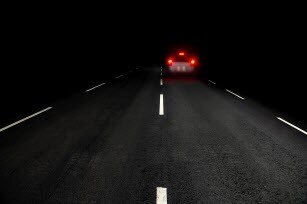Drivers can face unexpected hardships when operating their vehicles at night. Before hitting the road, consider these 10 ways to reduce your chances of a roadside event.
- Slow Down - Be cautious on roadways, especially those that are poorly lit by decreasing your speed.
- Increase Following Distance - Increasing your following distance will give you ample time to react to sudden changes
- Minimize staring at Oncoming Lights - Try to not look directly at lights which can increase eye fatigue. In situations where approaching drivers are using their high beams, redirect rearview mirrors to reflect away from your eyes.
- Reduce Dash light Brightness - Many vehicles allow drivers to adjust dash lighting manually (if not automatic), consult the vehicle owner's manual for how to reduce lighting to the lowest level of brightness.
- Clean & Adjust Mirrors - Mirrors with road grime and dirt can distort or make viewing challenges, especially in dark conditions. Drivers should always wipe and maintain mirrors on a regular basis.
- Clean Windows and Windshield - Windows and windshields are extremely important to keep clean and clear, especially when traveling at night. Keeping them clean will reduce glare and light distortion that could impact a driver's ability to react to situations.
- Change Headlight Aim - Many vehicles allow drivers to change the position and aim of headlights which can significantly help the visibility of driving at night. Consult the owner's manual of your vehicle.
- Follow Roadway Indicators and Signage - Even though some situations may make road striping and other indicators hard to see, stay vigilant and use other identifiers to help you see intersections and turns.
- Highbeams Usage, when appropriate - Highbeams can help drivers see in unfamiliar situations such as backroads and poorly lit areas, however, high beam usage should be limited or quickly adjusted for any oncoming traffic to prevent impairing another driver's vision.
- Double-check for Pedestrian Traffic - be sure to double-check for pedestrians, traffic or obstructions in intersections by being extra vigilant.
Source: www.businessfleet.com

